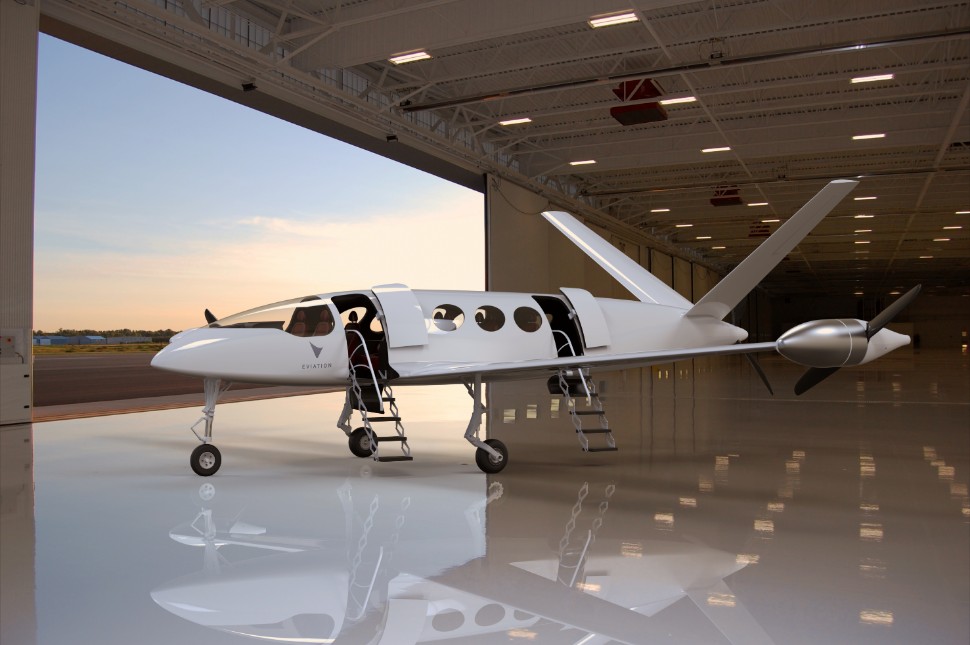Electric motor company MagniX will supply powerplants for Eviation Aircraft’s in-development electric aircraft Alice, marking another win for the upstart motor maker and a second power option for Alice buyers.
Eviation will offer the nine-passenger Alice with triple MagniX Magni250s – electric motors generating 375shp (280kW). They will turn Alice’s props at 1,900rpm, says MagniX chief executive Roei Ganzarski.
“They are very light and very powerful,” he says of the Magni250 propulsion system.
Eviation expects the Alice, a commuter and business aircraft, will be certified in 2021 and enter service in 2022.
MagniX, based in Redmond, Washington also expects 2021 certification for the Magni250.
Israel-based Eviation had already named Siemens as one motor supplier for the Alice. Siemens’ system includes 260kW electric motors powered by a 900kWh lithium-ion battery pack. That same battery pack will power the Magni250s.
Two motor choices eases "potential supply chain issues”, giving customers “broader choice of price points and maintenance schedules,” Eviation chief executive Omer Bar-Yohay has said.
The Alice will have three pusher propellers – one behind its “V” tail and one each at the wingtips – and be capable of flying 565nm (1,050km) and at 260kt (482km/h), says Eviation.
That range would enable the Alice to serve many existing air routes and make new connections via smaller, under-served airports, the companies say.
“That’s a significant aircraft,” Ganzarski says of the Alice, noting 45% of air routes fall within its range.
Actually, 55% of airline flights worldwide in April were within 565nm, according to Cirium data and analytics.

Eviation Aircraft
Each Magni250 contains two modules (managed by separate inverters) that, combined, provide 375shp. If an motor problem occurs, software can shut down one module and keep the other running, meaning the system will still provide 50% power, a feature Ganzarski calls "graceful degradation".
“You can really create a high level of redundancy,” he says.
MagniX has conducted more than 1,500h of motor ground tests in both Redmond and at its Australia site, and Eviation has been testing a Magni250 with the Alice’s propellers in Israel, says Ganzarski.
Eviation says MagniX is one of few manufacturers capable of building an electric engine for the Alice.
“MagniX has not just tested their propulsion system, but they’ve ran it with Alice’s specific profile,” Eviation says. “We can reassure customers that their motor can perform as expected under normal conditions and extreme ones.”
Eviation, which is providing the battery system, has been assembling the first Alice prototype in Vannes, France. Alice will have a fly-by-wire system and Honeywell cockpit avionics.
“We hope to fly the aircraft ahead of the Paris air show in June, where it will make its debut,” Bar-Yohay has said. MagniX’s motor will also be on display at the show.
Eviation plans to achieve first flight of the fly-by-wire equipped Alice this fall. It will perform flight testing in Prescott, Arizona, and expects three aircraft will join the flight-test campaign, including two prototypes and one production-conforming aircraft.
THE CASE FOR ELECTRIC
Owned 100% by Singapore investment company Clermont Group, MagniX is also developing its 751shp Magni500 motor for installation on de Havilland DHC-2 Beaver seaplanes operated by Canadian regional carrier Harbour Air.
Those motors well suit Harbour because many of its flights have duration of only 30min – within the system’s capability.
Despite naysayers, Ganzarski insists technology already allows for development of electric passenger aircraft, though not anything like a widebody jetliner.
There’s no escaping that the best lithium-ion batteries have about 260Wh/kg of energy density – almost 50 times less than jet fuel’s 11.9kWh/kg density.
Electric aircraft therefore cannot nearly match the range of fuel-powered aircraft.
However, small electric passenger aircraft can efficiently operate countless shorter-distance routes, Ganzarski says.
The key is developing aircraft from scratch around batteries and motors, making them essentially “flying batteries”, says Ganzarski.
Electric motors are lighter and smaller than fuel engines, and they can be fitted on an aircraft’s wingtips, such as on the Alice.
“If I tell you that tomorrow we can take nine passengers 650 miles, and maybe in five years [take] 50 people 650 miles, that’s a reality,” Ganzarski says. “I see no reason you cannot… with the current motor technology we have.”
Electric motors cost significantly less to operate than fuel-burning engines – 60-80% less than internal combustion engines, says Ganzarski.
The electricity required to power a small electric aircraft on a 100-mile flight might cost $8, compared to $350-$400 for the fuel a convention aircraft would need, he says.
Also, electric motors also have far fewer parts than fuel-burning engines, meaning they require significantly less maintenance and overhauls.
Source: FlightGlobal.com

























